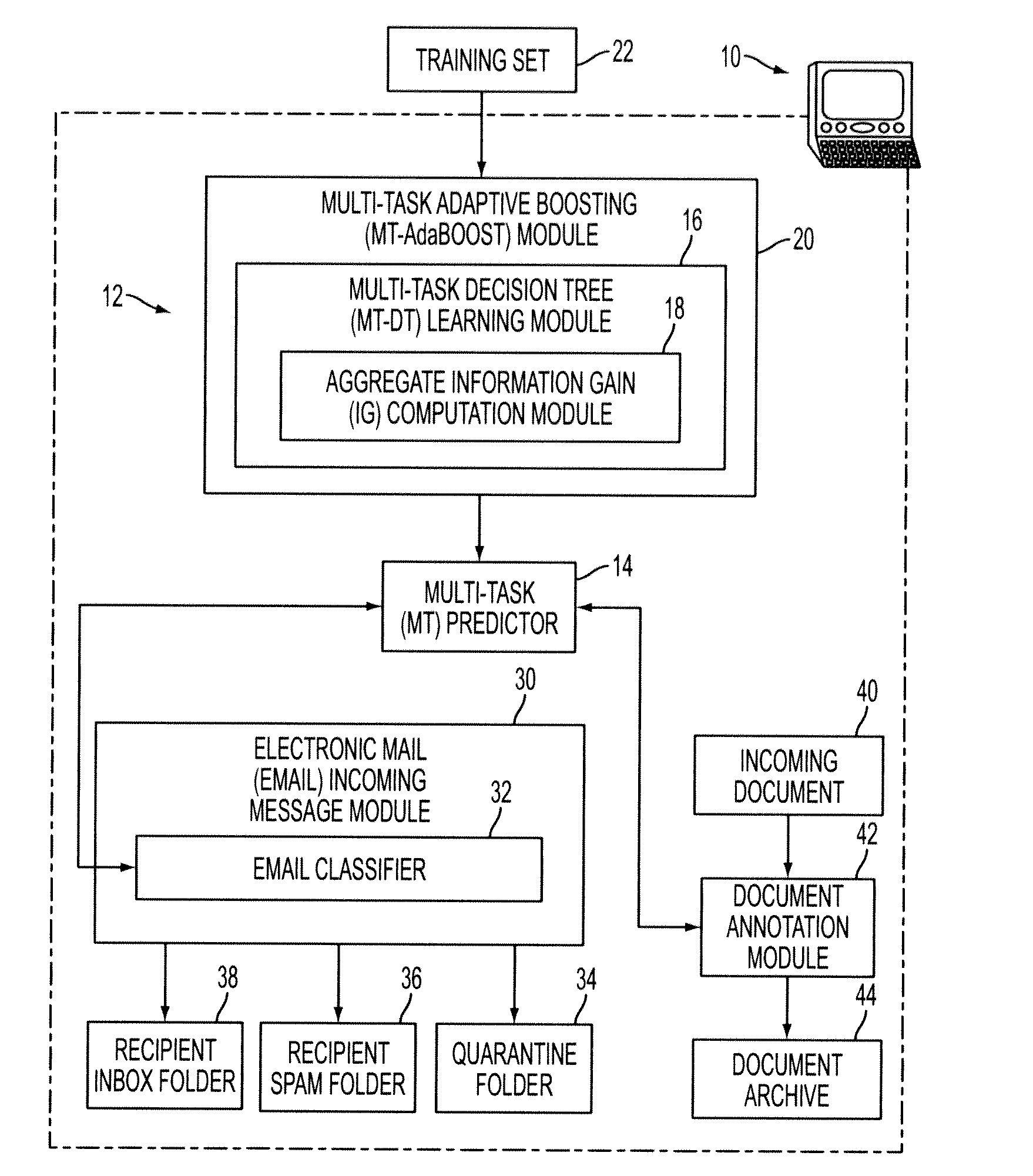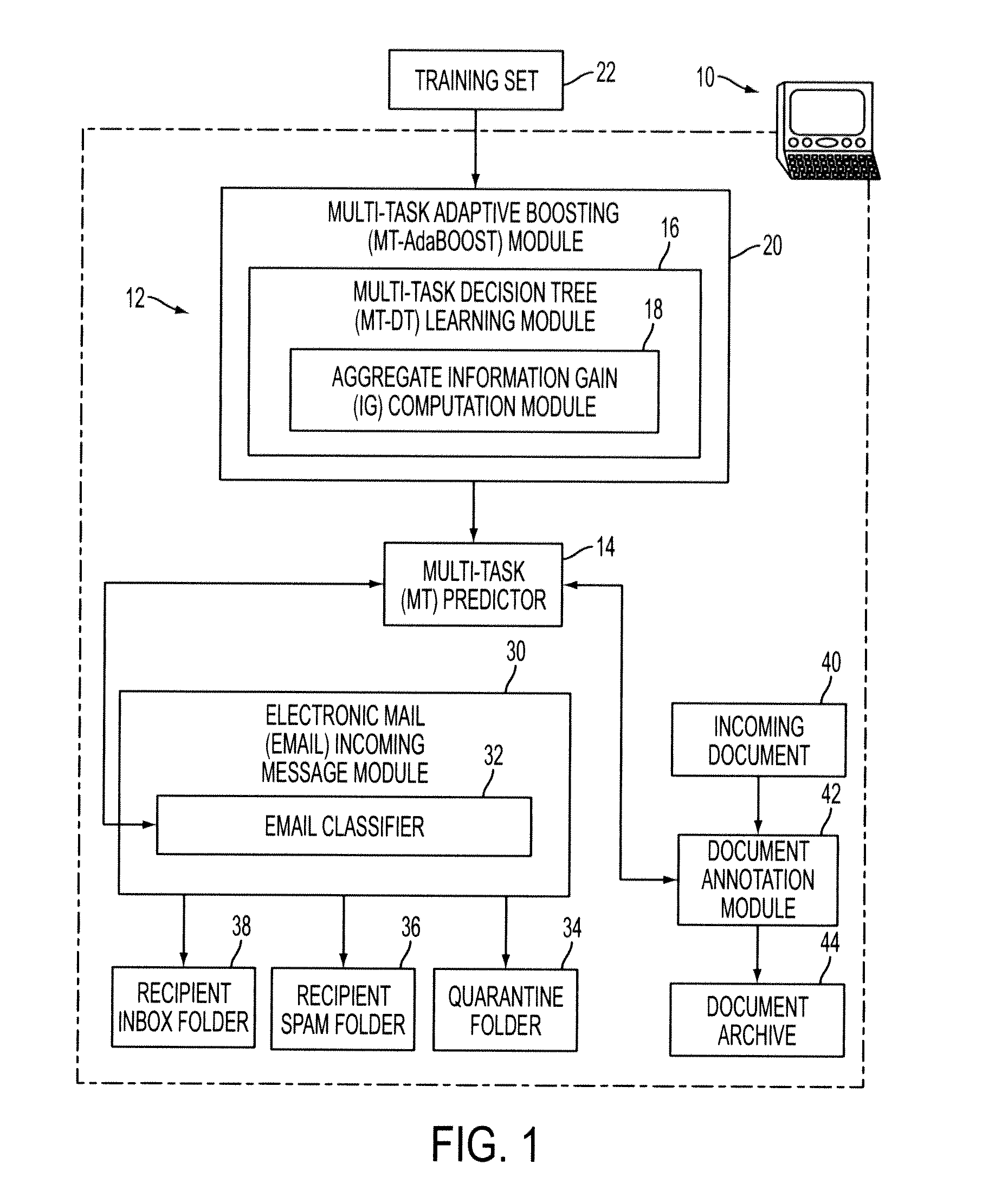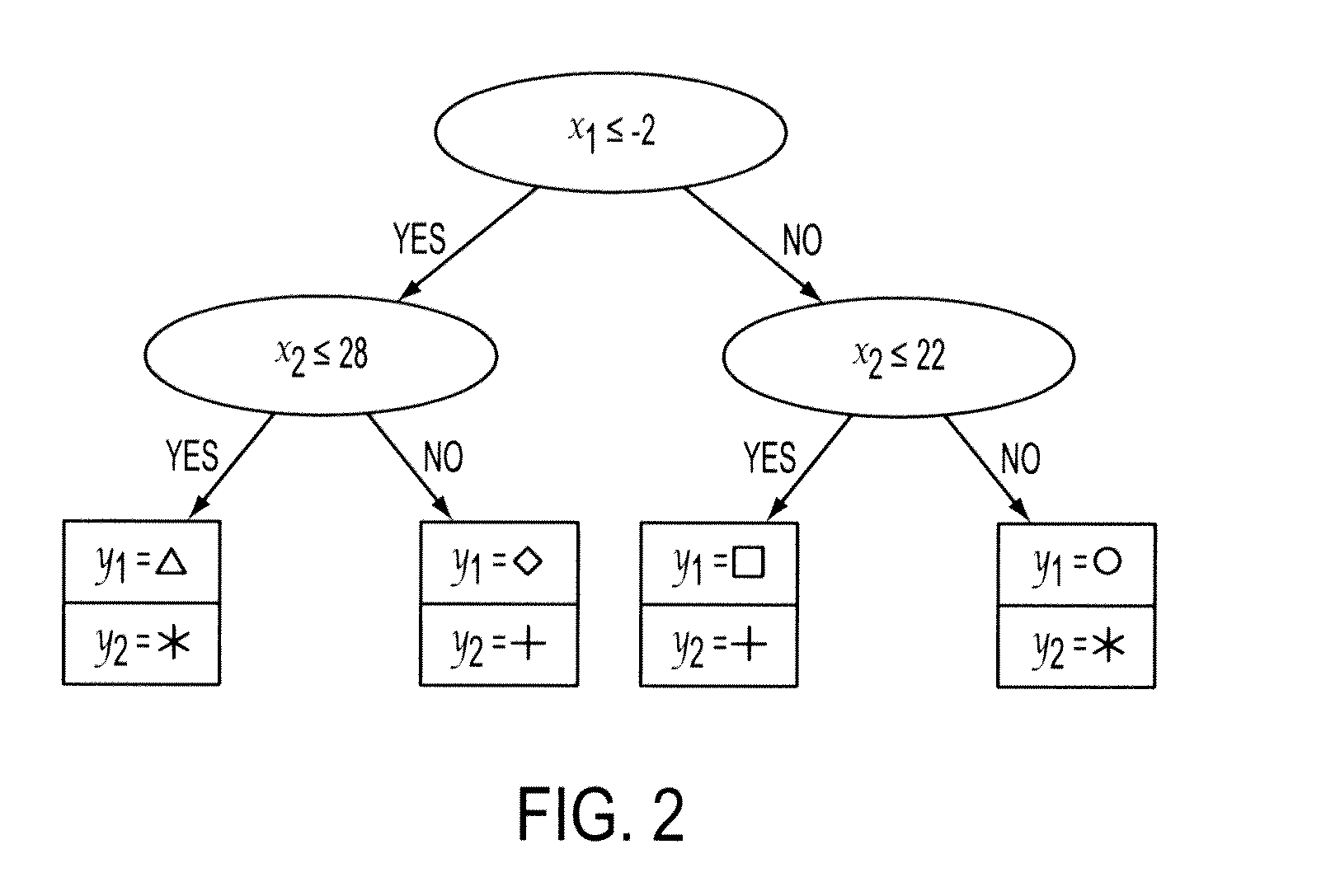Learning multiple tasks with boosted decision trees
a decision tree and task technology, applied in the field of machine learning arts, can solve the problem that the approach cannot leverage task interrelatedness, and achieve the effect of maximizing the largest single task information gain
- Summary
- Abstract
- Description
- Claims
- Application Information
AI Technical Summary
Benefits of technology
Problems solved by technology
Method used
Image
Examples
Embodiment Construction
[0016]With reference to FIG. 1, a machine learning system is implemented by a suitably programmed computer 10. The machine learning system includes a learning component 12 which generates a predictor 14. The learning component 12 includes a multi-task decision tree (MT-DT) module 16 that learns at least one MT-DT from which the predictor 14 is generated (e.g., from the outputs of the decision leaf nodes of the learned MT-DT). The learning component 12 performs a multi-task learning problem for a set of tasks (where the number of tasks is at least two). Accordingly, the learning of the decision rules for the nodes of the MT-DT suitably employs an aggregate information gain (IG) 18 that aggregates single-task IG values for tasks of the set of tasks. In some embodiments a plurality of MT-DT's are learned and operate as “votes” in the framework of a multi-task adaptive boosting (MT-AdaBoost) module 20 to generate the predictor 14. The machine learning component 12 operates on a training...
PUM
 Login to View More
Login to View More Abstract
Description
Claims
Application Information
 Login to View More
Login to View More - R&D
- Intellectual Property
- Life Sciences
- Materials
- Tech Scout
- Unparalleled Data Quality
- Higher Quality Content
- 60% Fewer Hallucinations
Browse by: Latest US Patents, China's latest patents, Technical Efficacy Thesaurus, Application Domain, Technology Topic, Popular Technical Reports.
© 2025 PatSnap. All rights reserved.Legal|Privacy policy|Modern Slavery Act Transparency Statement|Sitemap|About US| Contact US: help@patsnap.com



